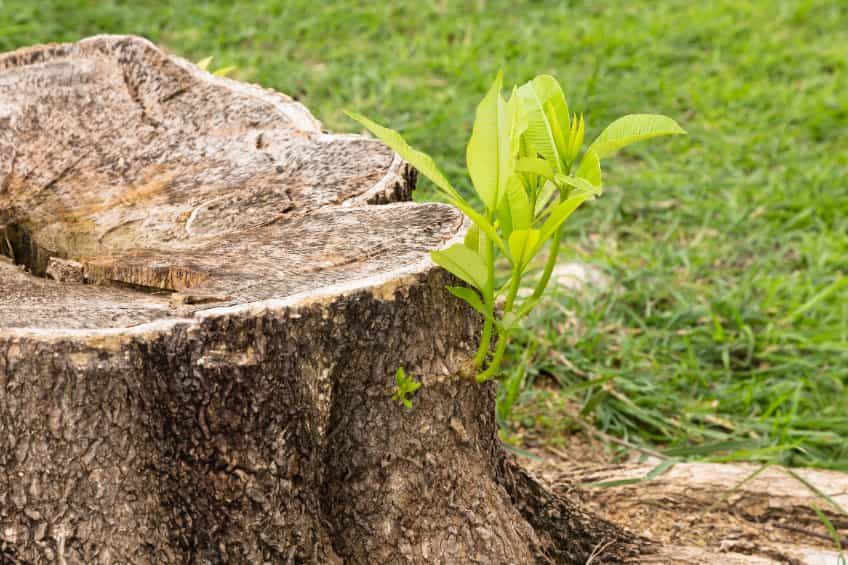Building a Beautiful Retaining Wall that Will Last a Lifetime or Longer
What is a Retaining Wall?
Retaining walls have remained key elements of residential and commercial landscaping for thousands of years, with ancient concrete and stone iterations still existing as ruins in Greece, Italy, and the Middle East. The ancient monument of Newgrange (above), dating to 3200 BC in County Meath, Ireland, is encircled by a quartz and cobblestone retaining wall.
Retaining walls are man made structures built from poured concrete, stone, concrete blocks, or wood for residential and commercial properties; they are constructed to retain earth that may otherwise slope down onto the property and are equipped with outlets by which to release water that builds up within the soil held back by the wall. Retaining walls are typically professionally constructed by trained contractors because of the structural integrity required to support earth at an unnatural angle and prevent continuing soil erosion.
Retaining walls can be built from many different materials to achieve the strength required by the landscape and to achieve the aesthetic goals of the property owner. Retaining walls can be constructed as a single entity or as a series of shorter stepped walls (for a terraced effect) and can be accessorized with raised bed gardens, fountains, hanging plants, or even built-in appliances and furnishings like grills, shallow fire pits, and amphitheater-style seating. Retaining walls can also outline a road, provide barriers for a pool, or feature a set of steps.
Common Types of Residential Retaining Walls
Gravity
Gravity retaining walls are typically shorter than other types of retaining walls because they use only their own weight to keep earth in place; they are most often constructed with concrete (blocks or cast) or stone because the weight of the building material is essential to the wall’s effectiveness. Gravity walls are often stepped and accessorized with gardens and seating because of their accessible low (often no greater than six feet) height. These shallow walls can be constructed in a number of shapes, from curved to straight, in order to match the aesthetic and structural needs of the property. Semi-gravity walls are gravity walls with added support from internal reinforcements. Gravity retaining walls are the easiest to build on your own.
Cantilevered
Cantilevered retaining walls are typically much taller than gravity walls, with an additional element set into the ground perpendicular to the visible wall. Cantilever walls require less stone, concrete, etc. than do gravity walls because their effectiveness does not rely on the weight of the wall itself.
Counterfort
Counterfort retaining walls are similar to cantilever walls as both employ an underground element perpendicular to the above-ground wall. Counterfort walls differ from cantilever walls in that they are often much higher and are additionally supported by angled “counterforts,” which buttress the visible wall externally. Counterfort walls are less common in residential landscaping than in urban and commercial. However, stepped retaining walls function somewhat similarly and are common on residential properties.
Anchored
Anchored retaining walls are those with cables that have been set into both the hillside against the wall and the building material (typically poured concrete) itself. Anchors are often applied to further support a thin wall that is expected to protect a property against a heavy mass of soil.
Building Materials
In an article for the National Post, Mike Holmes of Holmes Makes It Right on HGTV, endorsed concrete and stone as the most desirable building materials for retaining walls. According to Holmes, while wood is often used in retaining wall construction, “wood will decompose faster than stone or brick and, as it breaks down, so will the strength of your retaining wall.”
Poured Concrete
Though poured concrete has been less commonly used in residential retaining walls of the past, the contemporary desire for a streamlined, minimalist aesthetic has contributed to a rise in their popularity. According to a post by the Landscaping Network, poured concrete retaining walls are versatile and varied, capable of offering “very organic and creative finishes,” as shown in the photos above, but “should be designed by a landscape architect to ensure there is adequate footings and steel.”
Concrete Blocks
Concrete blocks are existing units that can be purchased and assembled at will from a manufacturer. According to This Old House’s John Wagner in his article “Engineering a Retaining Wall,” concrete blocks are desirable because they are “small and modular,” allowing a contractor or DIY builder to choose the curve of the wall. They are also available in “many textures, shapes, and colors.”
Stone
While stone masonry retaining walls can be expensive to build and will often require a professional contractor, they offer significant support and blend in well with the surrounding landscape due to a more natural appearance. Stone offers the unique opportunity to match the material of your retaining wall to that found naturally around the home, or a type of stone that fits the theme of the house, whether that be “Mediterranean villa” or “English cottage.” Stone is an ideal building material for shallow retaining walls like gravity walls and will provide a more rustic aesthetic, perfect for a property owner who would rather their wall blend into the countryside.
Building Your Own Retaining Wall
We here at Lafayette Concrete Services have learned a thing or two throughout the years so our knowledge is based on our experience. That being said, while working with a contractor or licensed company will typically result in the highest quality retaining wall, due to their years of skill and access to materials, one can construct their own. To build your own retaining wall easily and effectively, follow the below steps:
- Dig a trench with a level bottom to create a solid foundation for your wall.
- Create a base by laying a quality landscaping fabric or paver base at the bottom of the trench.
- Begin laying the building elements; use cinder blocks or poured concrete blocks for easy construction! Stagger the blocks to ensure the wall’s strength. (Tip: Use a standard level.)
- Install capstones and other decorative elements! (Tip: Use a quality construction adhesive when finishing off the wall with capstones.)
Unique Builds
When it comes to retaining walls, quality does not limit creativity or aesthetic value. The above photos demonstrate how poured concrete and concrete cells can be used to create living gardens around a retaining wall, adding freshness to the otherwise stark appearance of the building material.
Stucco adorns the concrete retaining wall by Kikuchi + Kankel Design Group (seen below), used traditionally as amphitheater seating while maintaining an air of sophistication and honoring the surrounding California landscape. Concrete is updated a second time by Shades Of Green Landscape Architecture in the image below on the right, in which a sleek, dark finish adds to the modern Japanese aesthetic of this backyard. The soft lighting set directly into the retaining wall adds to the luxurious, romantic retreat.
According to Tim Carter in the Washington Post’s article “How to Build a Retaining Wall at Your Home that Will Last,” when built to last from quality materials and treated well by the property owner, retaining walls can last a lifetime. We hope you enjoyed reading this and encourage you to visit our site lafayette-concrete.com.
















